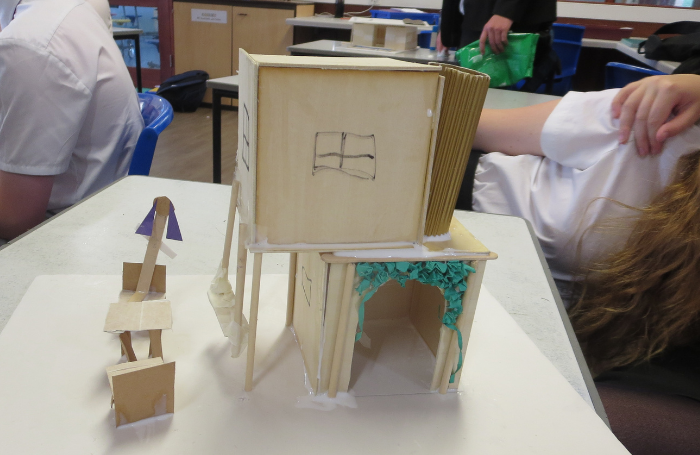As the new year begins, teachers all over the country will be delighting in the arrival of their new stationery and materials for art and DT lessons. But did you know a lot of your pre-ordered materials could also be used for architecture projects?
Many people wrongly assume that you need to spend a lot of money and buy very specialist materials for architecture model making or design. At RIBA, we are huge fans of using recyclable materials such as cereal boxes, yoghurt pots and kitchen rolls for creating concept designs, all of which can easily be acquired through parent call outs or begging a favour with the canteen staff.
However, for those of you who would like to experiment with more ‘realistic’ materials, we have compiled a shopping list of materials and tools you could consider using with students, many of which you may already have access to.

Basic model making materials
- paper and craft paper: perfect for paper modelling and creating quick concept models. Envelope paper is really good for creating stronger models!
- tracing paper: this can be used in drawing designs or creating textures in models e.g. windows
- sheet acetate or Mylar: brilliant for creating semi transparent looks e.g. windows, cladding. Hint - sand the acetate to give it a frosty look
- corrugated cardboard: useful for creating textures, using as roofs, building blocks, showing corrugated metal
- chipboard: very versatile material. Cuts really well and takes paint well. Hint - cut them up into smaller sizes for storage
- XPS foam: good for a model base, it is quite easy to carve and create complex designs from. However, it may not look the most professional
- balsa/basswood: every model maker’s essential. However, it can be quite expensive and so should only be used for parts of models or very small scale models
- acrylic and sheet plastics: if you are lucky enough to have a vac forming machine, these give a wonderful finish and look very professional.
- modelling clay: air drying clay is similar to what architects may use, but can be expensive. You can make your own playdough or use regular clay too

Tools
- scissors: a basic but essential piece of kit
- metal ruler: it's very important to get smooth edges when crafting or scoring
- cutting mat: hint - stick cutting mats to the table with tape to make sure they don’t move when cutting!
- PVA glue: useful for creating small details which you need time to place (PVA doesn’t set straight away)
- craft knife: great for carving and cutting, but needs to be sharp!
- glue gun: useful for securing things together quickly and strongly
Useful materials
- cable ties: great for connecting things together or creating textures/features e.g. making planks, fencing, etc. Hint - you can now buy reusable cable ties!
- florists' wire: great for making fencing, suspension cables and tree structures
- lollipop sticks: can create textures and plank details such as in fencing or on a roof
- sandpaper: Useful for smoothing edges or can be painted to create texture
Need inspiration for models you might like to make? Take a look at our free resources for ideas and inspiration.









